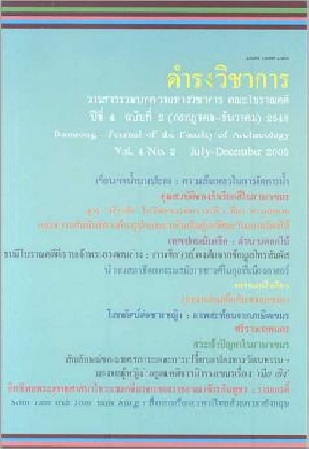PEDESTAL WITH A “ VALAI” MOULDING IN DAVARAVTI ART : ORIGIN, CONCEPT AND RELATIONSHIP BETWEEN INDIA AND SOUTH EAST ASIA
Keywords:
ศิลปะทวารวดี, บัววลัยAbstract
A “Bua Valai” pedestal (or pedestal with a “Valai” moulding) is the name of a type of base from the Dvaravati period (“Valai” means bracelet) used to support a building. This sort of base can be compared with those found in India, especially Southern India. Ancient Southern Indian artisans preferred to decorate bases with a convex moulding called “Kumuda” (meaning a lotus bud in the shape of a bulb). Thus, the author proposed that the beases used in Dvaravati art might have been inspired by Southern India art was influenced by arts from the other South East Asian Kingdoms of the 12 - 16 centuries B.E. such as middle Javanese (in Indonesia), Pre-Angkorian Period Khmer art (in Cambodia) and Sri Kasetra as well as Pagan art (in Myanmar). However, it is also found that the pedestals with “Valai” moulding were only popular during The Dvaravati period; after this epoch, bases consisting of overturned and upturned lotus mouldings were preferred
Downloads
Issue
Section
License
บทความนี้เป็นผลงานของข้าพเจ้าแต่เพียงผู้เดียว และ/หรือเป็นผลงานของข้าพเจ้าและผู้ร่วมงาน ตามชื่อที่ระบุในบทความจริง และเป็นผลงานที่มิได้ถูกนำเสนอหรือตีพิมพ์ที่ใดมาก่อน




